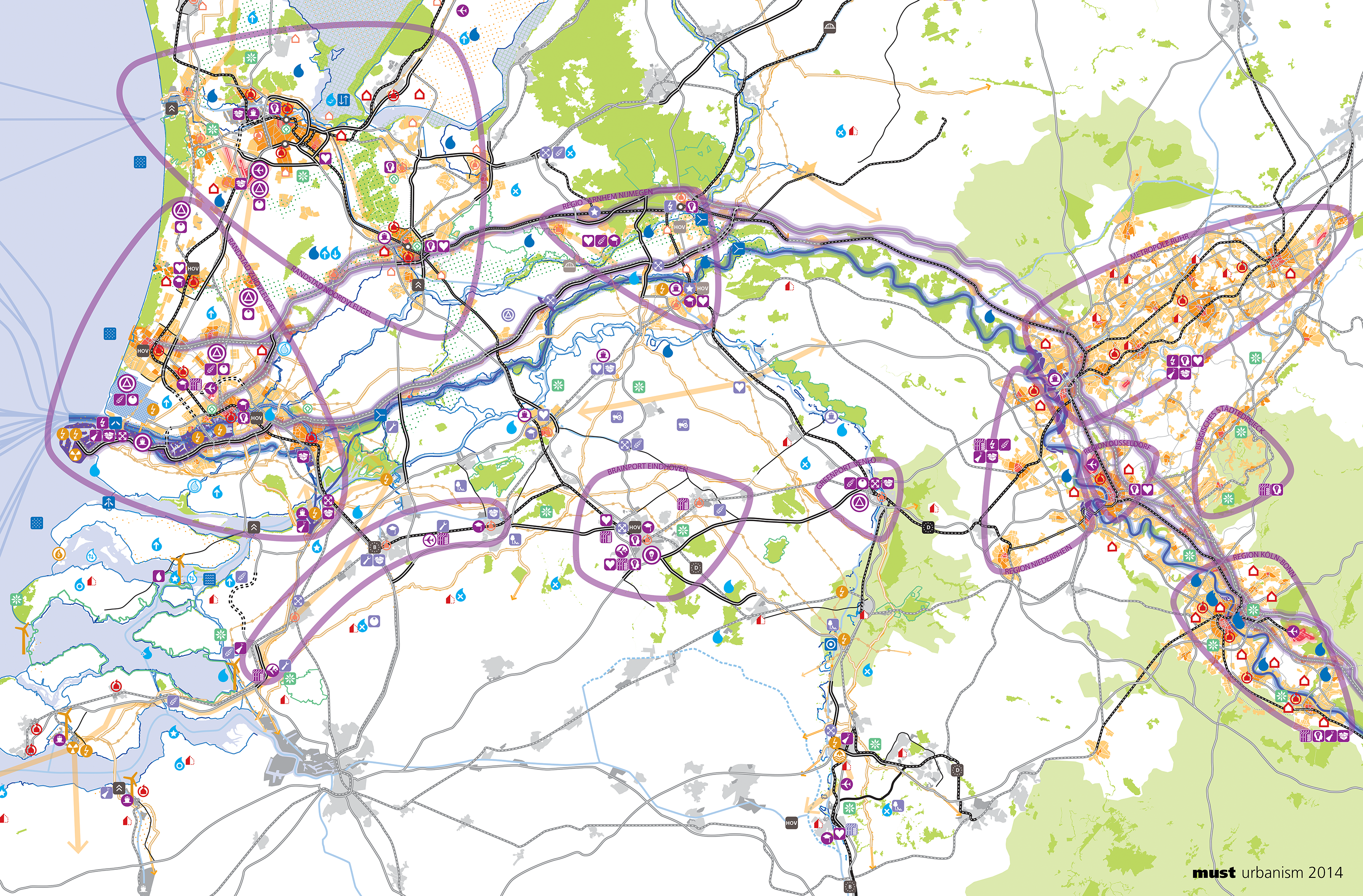
City development in Rotterdam (source: David van der Mark)
Practice
The Rotterdam – Rhein / Ruhr zone (R2R) is one of the largest urban conglomerations in Europe, containing about 25 million inhabitants. The different kind of infrastructures along the Rhine (water, road, rail) together form one of the most important gateways to Europe, providing the basic condition for large flows of goods and people. A series of harbours, airports, industrial zones and metropolitan regions cluster around these infrastructures. The map of the regional development agenda (see figure below) shows there are many developments and ambitions in different sectors such as economy, urbanization, mobility, water, energy and nature. In the near future, a broad series of projects in the field of infrastructure has been planned. A good connection between the European corridors and the regional urban system can give a strong impetus to the regional economy. For example, the growth of (freight) transport offers the possibility of international hub development on the crossings of international, multimodal corridors
Issues
| Corridor level: | ||
 |
 |
|
| Optimizing the connection between infrastructures across international borders in order to create a coherent, optimal multimodal system (networks); | Strategic planning of international nodes in relationship to multi-scale networks (networks). | |
| Regional / DUS level: | ||
 |
 |
|
| On the main infrastructure lines in the region, the DUS traffic flows are competing with the traffic that moves on the level of the European corridors, leading to congestion (networks); | The regional scale is crucial to strategically manage different modalities, different infrastructure scales and the land-use around the multimodal nodes (networks). | |
| Local level: | ||
 |
||
| Giving space to hub development can lead to local environmental issues, spatial barriers and negatively impact living qualities (space). |

NUVIT themes
A prologue study could focus especially on the Hub development in Duisburg and Rotterdam, where the following themes are to be considered:- Spatial acupuncture for merging expanding infrastructure into the urban fabric (space);
- Local interventions in different modalities that have an overall system impact (system);
- Embedding developments of the harbour in relationship to living quality (space);
- Capturing value of the harbour for the city (value);
- Managing the spin-off effect of hubs on the whole urban system (value).
Stakeholders
- City of Rotterdam
- City of Duisburg
- Harbour Authority Rotterdam
- Harbour Authority Duisburg
- Rijkswaterstaat
- Strassen NRW